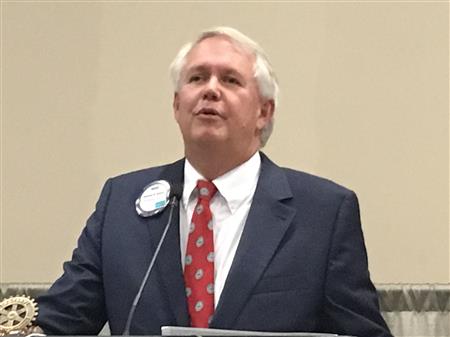Hospitals are focused on new care models.
Hospitals are focused on new care models, as health care becomes more expensive and experiences worker shortages, Lima Memorial Health System President and CEO Mike Swick told Lima Rotary Club Monday.
In a single year, hospitals across the United States treat 143 million people in emergency centers, provided 605 million outpatient visits, performed more than 27 million surgeries and delivered 4 million babies, Swick said.
Hospitals are also economic drivers in communities, contributing nearly $3 trillion in economic activity in the United States. Hospitals employ nearly 6 million people in the country, and support another 16 million other jobs.
Those positions, however, are experiencing worker shortages, exacerbated by an aging population. People getting older means two things: People are retiring, and they’re getting sicker, meaning more demand on the system at the same time that so many Baby Boomers are leaving the workforce.
Between 2014 and 2022, the system will experience 1.2 million register nurse vacancies, and by 2025, a shortage of 130,000 physicians. The doctor gap is being filled by what Swick called “physician extenders,” physician assistants, nurse practitioners, and certified nurse midwives.
Health care systems are innovating and reshaping how they deliver care, with new technology such as robotic surgery, electronic medical records, and telemedicine. However, the population is also getting older and sicker, and hospitals are attempting to address that with care that focuses on keeping patients well. That means things such as prevention, education, and identifying risks.
